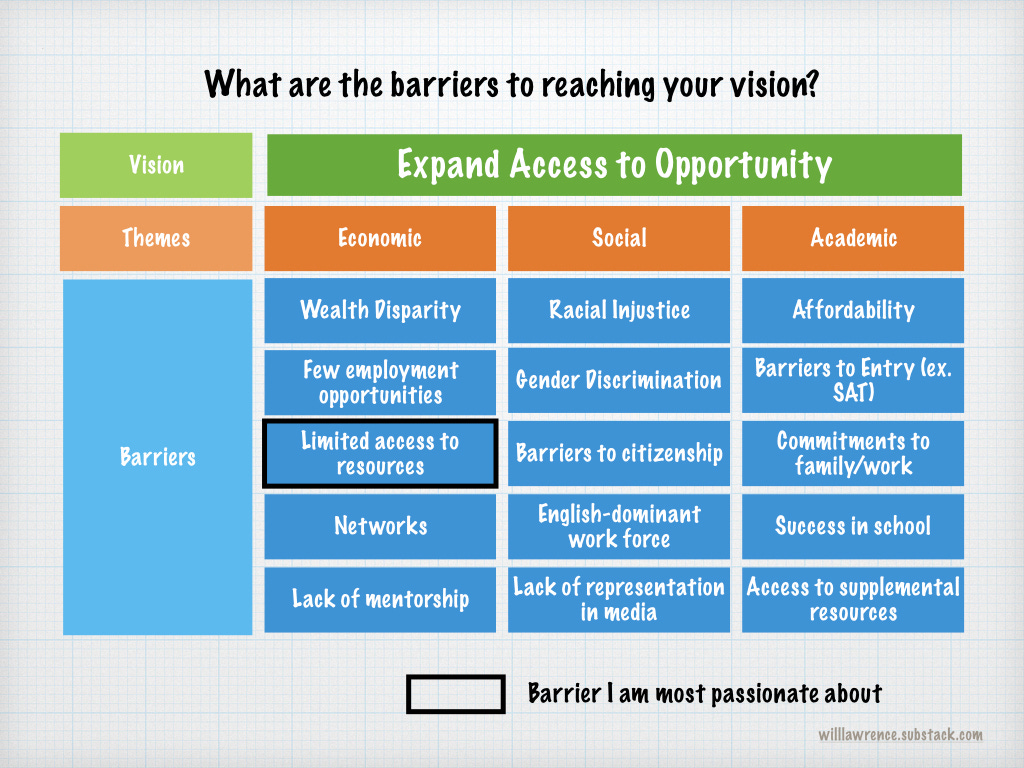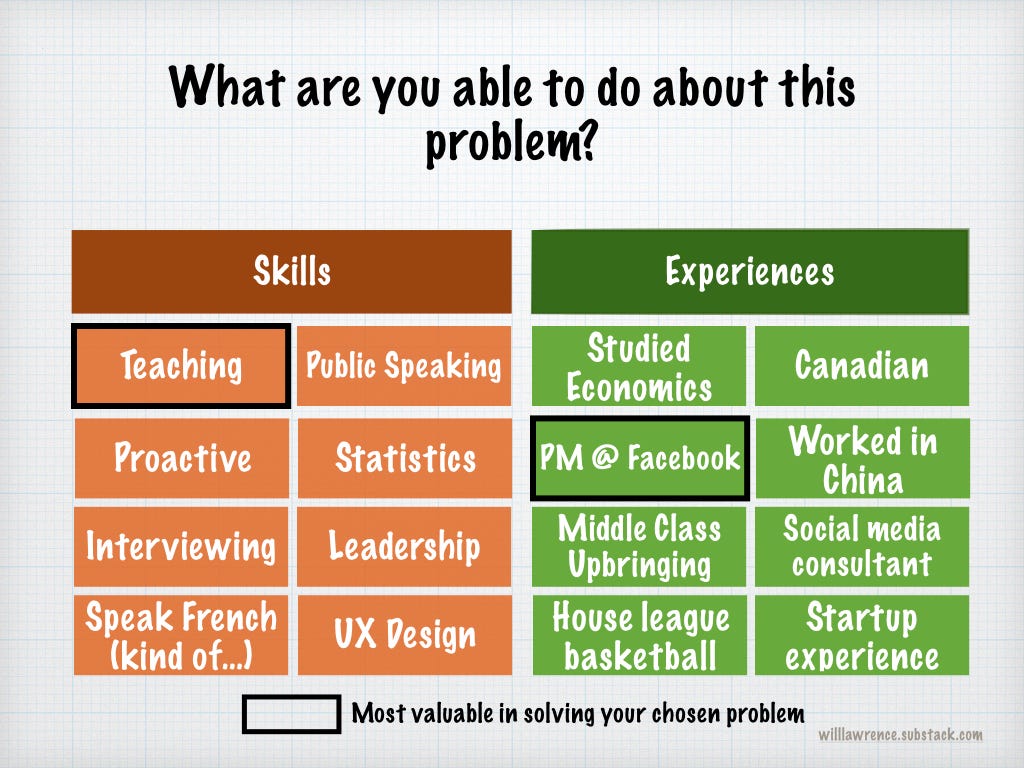How Product Managers Set Missions
Use a mission to chart a path towards your long-term vision
Summary: A mission statement is a path to making your vision a reality. To make one, identify a problem to solve (using root-cause analysis) and try to solve it with your unique assets.
Last week, we discussed product strategy and the concept of a product vision - a north-star to shoot for. This week we will go a step further to define a product mission.
We’ll start with the concept of a product mission and then apply it by creating a mission for your own life.
What is a mission?
Recall that Oxfam’s vision is a world without poverty. This is a big, inspiring vision — and there are a million ways of getting to this north-star! Oxfam could provide basic health services to all humans in the world, use microfinance to invest in female entrepreneurs or even build schools to educate the next generation. Each of these routes are viable and could help their vision become a reality. Whichever route you choose becomes your mission.
A mission is a chosen route for getting to your north-star vision.
To illustrate, think of a map. Your vision is a destination and your mission is your chosen route to get to that destination.
In product management, a mission enables a team to:
Align actions with desired outcomes - All actions should help you move along the route towards your vision.
Measure progress - A route enables you to see how far away you are from your mission at any point.
Create strategy - With a route in mind, you can more easily understand what you will need to traverse this route successfully.
How do you choose what route to take?
Its a tough question. But let's work through it together ☺.
If you ever need to break down a big, ambiguous problem try root-cause analysis. This is a fancy phrase for identifying the real problems ("root causes") behind a given statement. (Check out this great article from former PMs at Facebook, Tesla, and Google on how to apply a similar method to think strategically.)
Start with a question: What are the barriers to reaching your vision?
List out as many problems as you can and try to group them into buckets of certain themes. For me, I’ll take my vision from last week (“Expand Access to Opportunity”) and break the barriers into economic, social and academic buckets.
From this list, choose the problems that you are most passionate about solving. While we'll go deep into prioritization in the future, one of the main factors in choosing a way forward should always be how excited you are about solving that problem.
For me, I’m especially passionate about making tech jobs more accessible. Most of my PM colleagues are Americans with Ivy League degrees. This gives me chronic imposter syndrome amongst these incredible people. I feel a responsibility to open doors to other people like myself who want to be a part of this industry and improve their economic opportunities. For this reason, I’ll focus my mission around the barrier “Limited access to resources”.
But back to you - you've now identified what you want to change in the world! Congrats! 🎉 Pat yourself on the back, this is a huge milestone that many never get to.
Let's turn our attention to how we're going to address this problem.
First, flip your problem into an opportunity. This framing will help make your mission more actionable and inspiring.
Now ask yourself: What are you able to do about this problem? To do this, list out your assets - the unique things you possess that can help you make progress towards your vision. For simplicity, these can be bucketed into your skills and experiences.
Once you have a list, identify the skills that you feel are the most valuable in solving your chosen problem.
For me, I'm in a position to learn from great product strategists. The frameworks and advice I'm learning give me one vector of skills to address the problem I've stated. I’ll combine this with my teaching skills to land on a mission:
You’ve now landed on a mission for your life. If you can do this, you can easily do the same for any product you’ll be managing in the future!
Let's Recap
A mission is created by identifying a problem to solve and matching those with the assets you have to solve it.
Try root cause analysis to identify the barriers stopping your vision from becoming a reality
Frame the problem as an opportunity for impact
Identify how you will address the opportunity with your assets
Spend this week thinking through your mission statement. Next week, we'll use it to dive into the big kahuna itself - strategy. I can’t wait to unpack this with you all.
If you’re new to Product Life, subscribe below for concise, actionable and often surprising lessons for product managers.
Until next time,








Love the step by step guide here - from Vision to Tactics - Thanks Will :D
Not sure how I missed this gem. Stealing this framework with pride for my team.